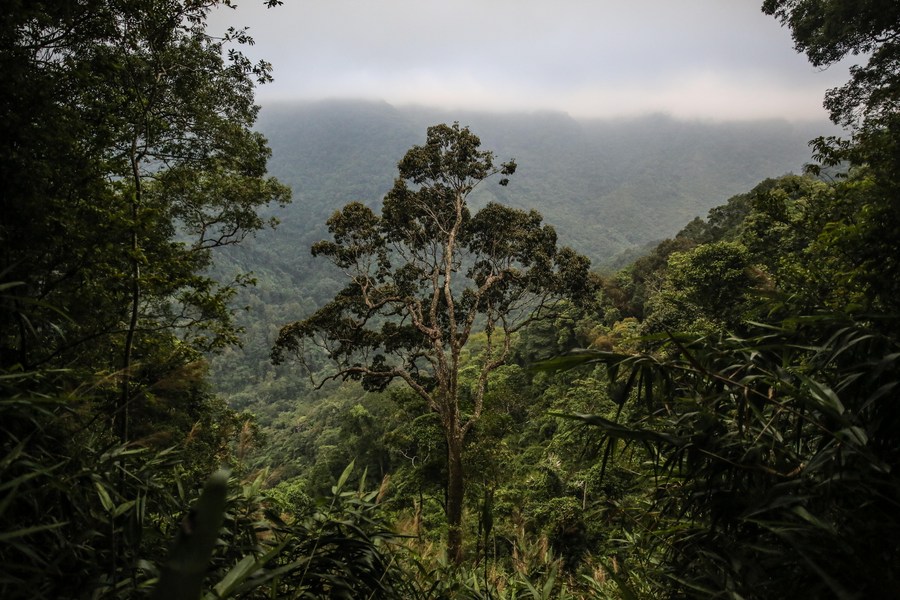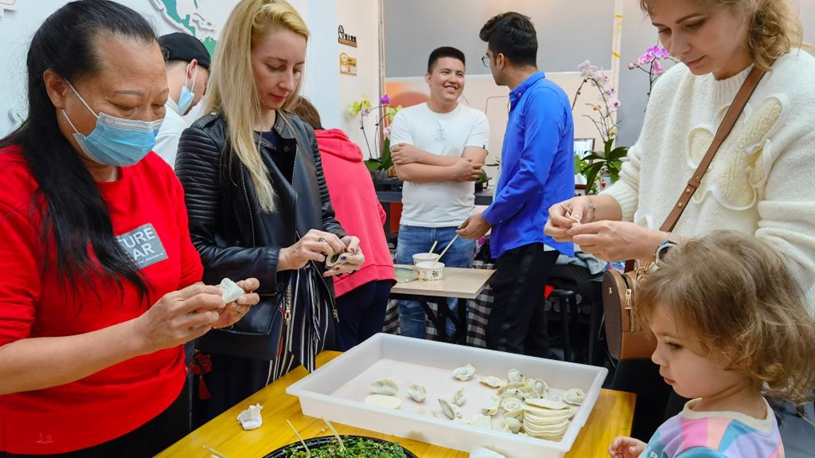
Photo taken on Oct. 25, 2019 shows a forest at the Bawangling nature reserve in south China's Hainan Province. (Xinhua/Pu Xiaoxu)
HAIKOU, Jan. 30 (Xinhua) -- A huge argument broke out between Guan Wanhou and his father.
"No way! Making agarwood is a craft passed down for generations within the family, how can I possibly share our secrets with other villagers," said Guan Yiguang, the old Guan, turning down his son's suggestion to teach their techniques to other villagers.
"Times have changed! If you want to make it big in this business, you can't just work on your own," his son argued.
Agarwood, better known as Chen Xiang in China, is known for being fragrant and having medicinal effects in traditional Chinese medicine. It is often used for perfume, incense, and souvenir carvings.
The Guan family are residents of Qinbiao Village in Ledong Li Autonomous County in south China's Hainan Province. The family is excellent at cultivating agarwood.
Guan Wanhou is a sixth-generation inheritor of the agarwood-making craft in his family. In 2006, he retired from the military and went back to his hometown to pass on the craft from his father.
Years have passed, but Guan's wish to make it big in the business has not been realized, especially as the country has banned the harvest of wild agarwood.
"I felt like I was working on my own," he said.
The junior Guan went to ask why local villagers were reluctant to grow aquilaria trees.
"They told me that they did not know the proper techniques to make agarwood and that they did not want to spend too much time on something they were not sure of," he said.
Guan then started talking his father into sharing their agarwood-making craft with locals so that more people would join them. The elder Guan argued heavily with his son, but eventually gave in.
"I told my dad that agarwood has a huge market, and supply is dwarfed by demand," the junior Guan said.
Guan Wanhou then started persuading local villagers to plant aquilaria trees and promised to teach them agarwood-making techniques.
Some local residents agreed and have been gaining skills in planting and caring for aquilaria trees and agarwood-making.
With the help of Guan Wanhou, villagers have grown about 50,000 aquilaria trees, but the plantation area is still "less than expected," Guan said.
"The main reason is the lack of land," Guan said, adding that he plans to encourage villagers to plant the trees in front of and behind their houses or grow the trees in existing fields such as rubber tree fields.
"We have about 800 families in the village, and if we can grow the trees around each family and along village roads, we will have at least 200,000 aquilaria trees," he said.
The trees are evergreen and can add to local greening efforts, he said.
"If we cultivate agarwood from all the trees we grow, we will surely reap a good harvest," Guan said. "It will be really exciting!"
The Hainan provincial government is encouraging the development of the agarwood industry, with a work plan in 2019 advocating the plantation of aquilaria trees to help people gain more income. Currently, the province has about 10,000 hectares of the trees. More than 1,250 companies have registered in Hainan in the field.
Guan plans to cultivate 250,000 aquilaria tree seedlings this year and give some of the seedlings to local residents for free.
"I hope the industry will truly take root in the village," he said. "I can't wait."
China has grown up to 67,000 hectares of aquilaria trees, which produce agarwood, but quality agarwood remains limited, and about 80 percent of agarwood used in China comes from imports, according to Cheng Qian, with the China Council for the Promotion of Environment and Forestry, citing latest figures.
Cheng said measures such as detailing industrial standards and strengthening market supervision should be taken to make breakthroughs in the development of the industry. ■












